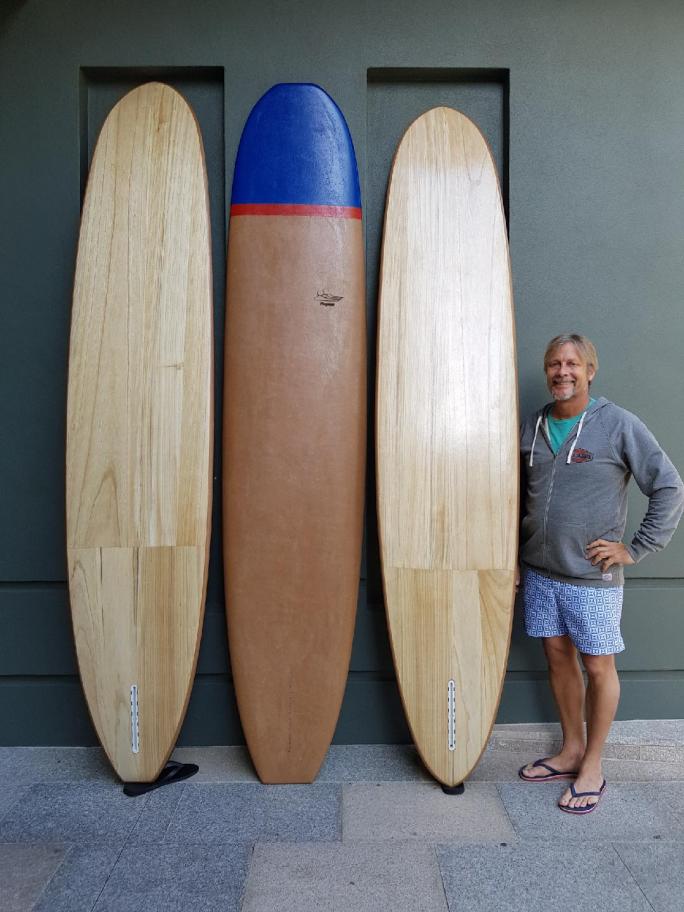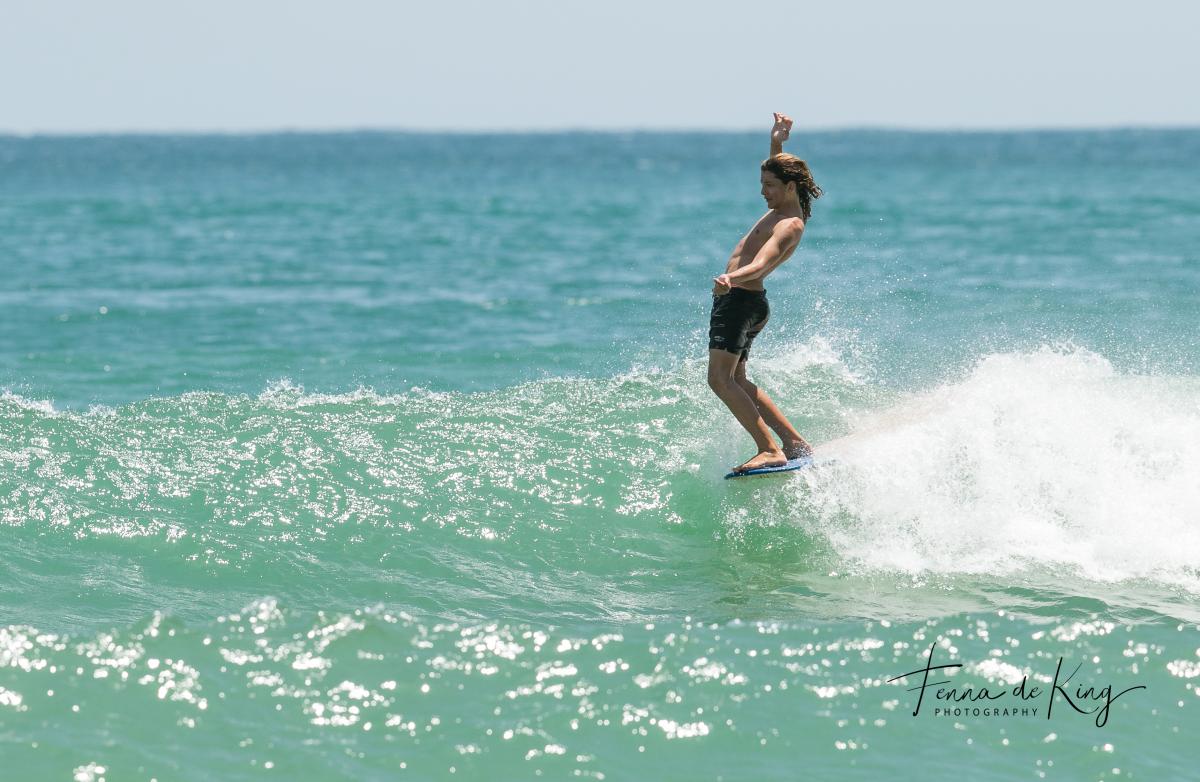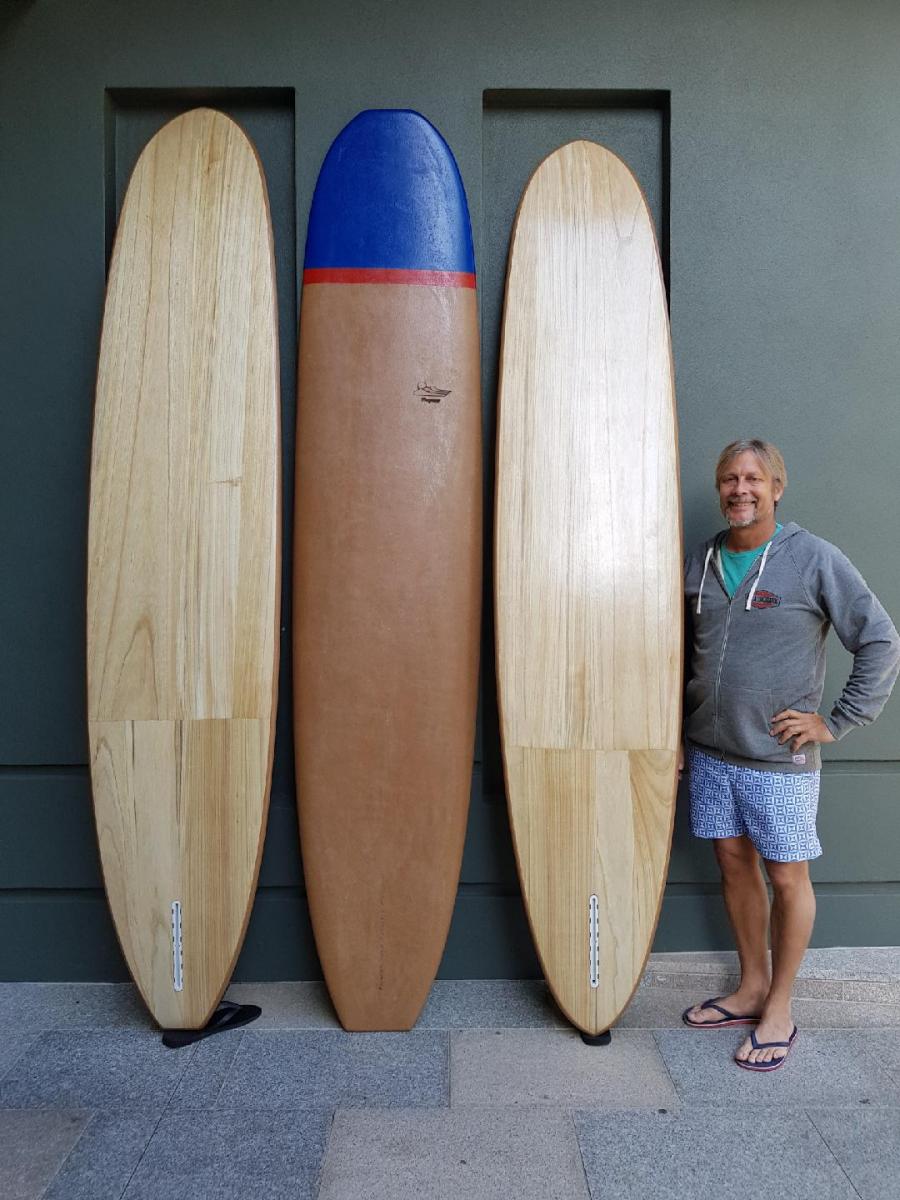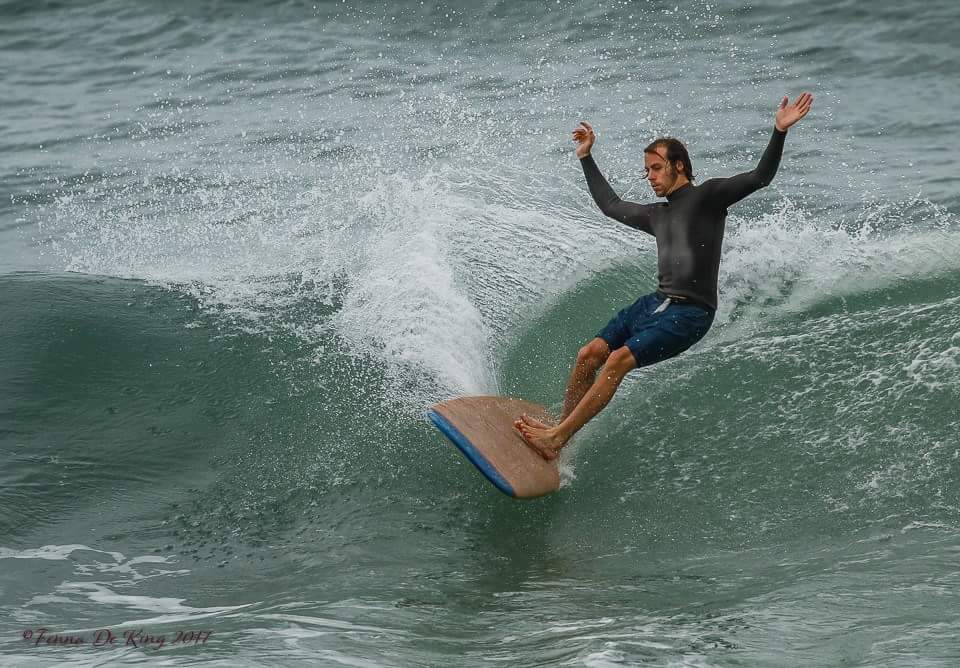
.

For a long time the goal for noseriders has been to adjust the rocker while on the nose. While hanging five or ten, you flatten the rocker, or even get reverse rocker, adding another level of speed and control. This was the idea behind the stringerless boards of the late 1960s. The feel was good but the materials were not right. The glassed, stringerless boards broke and lost their spring (like a wet noodle). The Corky method has allowed me to get the flex that has been the sort of holy grail of noseriding while maintaining strength and consistent flex. The wood will not break or lose its flex or memory allowing for years of advanced noseriding. When on the nose you can control the rocker and speed up or stall or climb or drop in the pocket. The board flexes and springs so it feels like you are on a diving board or trampoline. The board works with you to bounce out of turns giving another complete dimension to the ride. The speed and projection you can get advances your approach to surfing and you find that your start looking further down the wave because the new speed and agility will get you there sooner than a standard surfboard.
I have been making noseriders for a long time. By 1982 I was hanging ten on numerous old noseriders from the 1960s including the Nuuhiwa Noserders, the Velsy pigs, Hansen Goldstars, Weber Performers and many others. In Southern California there was an abundance of great noseriders left over from the longboard era. By 1983 I was making my own noseriders based on what I had learned from the earlier masters. Since then I have revisited the design concepts of noseriders as my construction methods have changed and as I surf different waves. For example, I redesigned my noseriders to conform to Australian waves, and then redesigned the shapes again when I started making hollow wood boards. Now I am doing it again with the flex and spring of the corky method. The design dynamics of noseriders are complex and challenging. They are boards where you can really feel every aspect of the shape and the success of the board can be easily observed in many small waves. In 1999 I wrote an article on Noseriding called “Suction + Tension = Hang Ten. It has was first published in Pacific Longboard and has been republished in several languages. It has become a sort of classic piece on noseriding. Link to article: http://http://www.tomwegenersurfboards.com/blog/suction-tension-hang-ten
At the Wegener home stay you can make a noserider with me and we can discuss their long history and design dynamics.


Price for a Corky Noserider $1850 Australian Dollars
Stay at the Wegener Home Stay and make one with Tom: 3 nights in the Wallace room and 3 1/2 days work $2800 Australian Dollars


